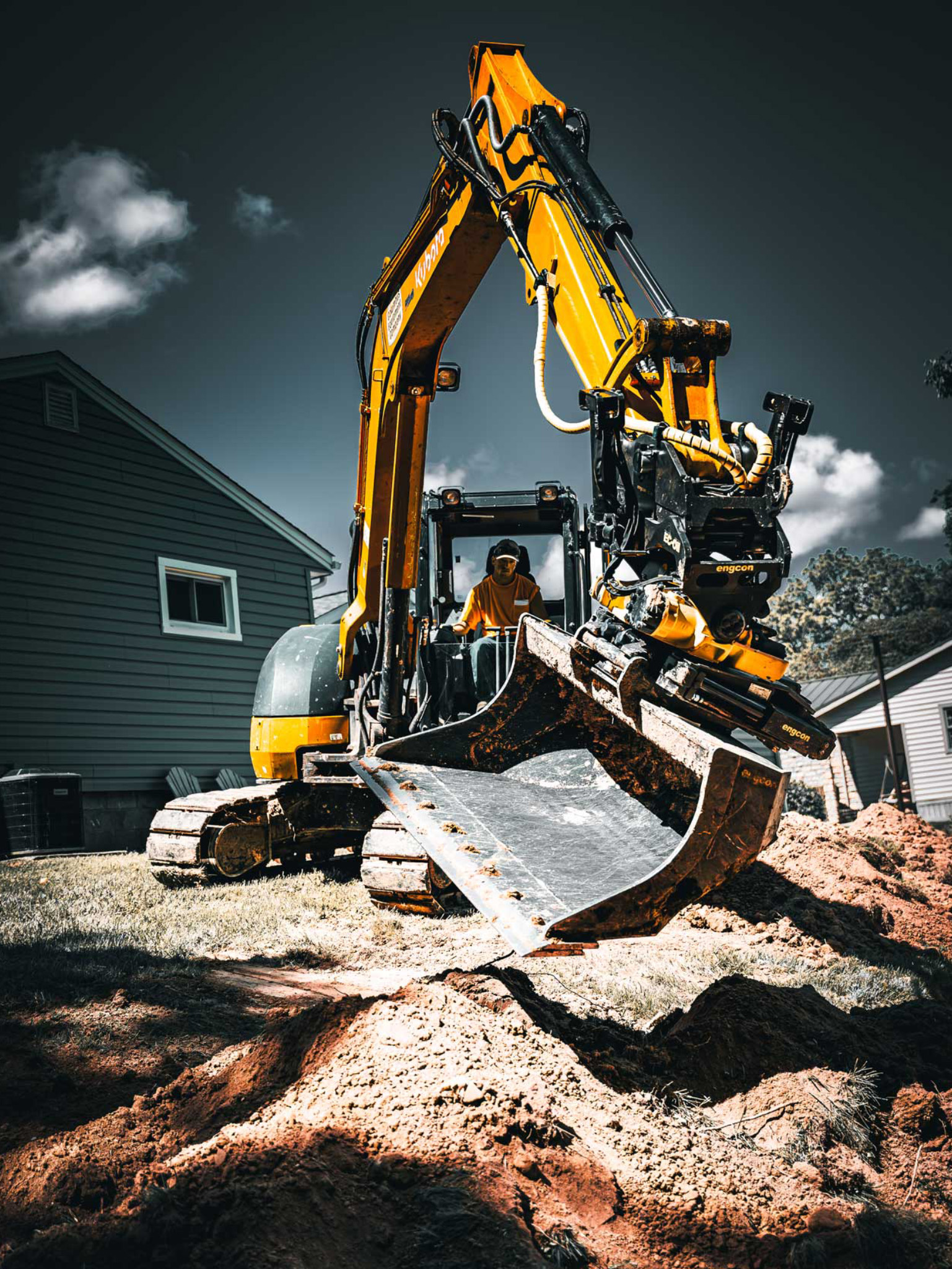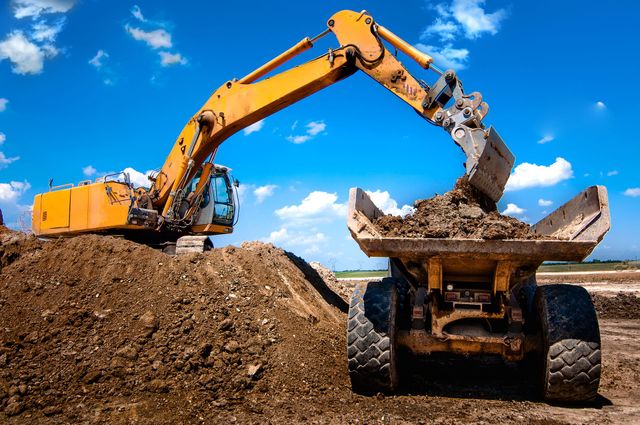Unveiling the Art of Excavation: Pro Tips for Safe and Productive Digging
In the realm of excavation, the mastery of productive and safe digging is an art form that requires precision, understanding, and adherence to well-known methods. As soil is transformed and planet is relocated, the ins and outs of excavation expose themselves, requiring a keen understanding of tools, dirt make-up, safety and security methods, and environmental factors to consider. The experience needed to browse these components successfully can suggest the difference in between a successful excavation project and a possible catastrophe. By unraveling the layers of this detailed procedure, a globe of insights and strategies awaits those looking for to raise their excavation abilities to new heights.
Value of Correct Equipment
To ensure the security and efficiency of any type of excavation job, making use of the suitable devices is extremely important. The right tools not just improve productivity however likewise minimize dangers connected with digging. Excavation jobs differ in extent and intricacy, varying from little household landscape design tasks to large-scale construction tasks. No matter the task dimension, having the proper tools can make a substantial distinction in the outcome.
Excavators are essential pieces of machinery in any excavating operation. These versatile devices can be found in various sizes to match various job demands. Tiny excavators are optimal for smaller sized jobs, while bigger excavators take on much more extensive tasks successfully. Backhoes are one more essential tools kind, combining the features of a loader and an excavator in one maker. They are important for jobs needing flexibility and maneuverability.
Excavators succeed in jobs that need pushing big quantities of dirt or particles. By spending in the suitable tools, excavation tasks can be completed securely, on time, and with accuracy.
Comprehending Dirt Structure
A comprehensive understanding of soil structure is fundamental for executing excavation tasks with accuracy and safety and security. Understanding the different kinds of soil is crucial as it straight impacts excavation methods, devices choice, and overall project efficiency. Dirt structure typically is composed of four primary parts: sand, silt, clay, and natural issue. Each component has special residential or commercial properties that affect how soil responds to excavation processes.
Silt particles are smaller sized than sand however bigger than clay, supplying modest water drainage and cohesion. Organic matter, such as decaying plant product, impacts dirt fertility and stability.
Prior to commencing excavation, performing soil tests to establish its make-up and qualities is crucial. This info helps in picking the appropriate equipment, implementing safety actions, and establishing excavation methods customized to the particular soil problems - lancaster trenching. By understanding dirt make-up, excavation specialists can enhance task outcomes while making sure safety and adherence to finest techniques
Precaution and Methods
Understanding soil composition is the cornerstone whereupon security steps and methods for excavation jobs are constructed, making certain the wellness of employees and the success of the undertaking. When it involves safety and security throughout excavation, there you could try these out are numerous key steps that should be executed to alleviate threats and protect against accidents.
Firstly, prior to any excavating begins, a complete examination of the site ought to be carried out to determine any type of potential dangers such as below ground utilities, unsteady dirt conditions, or nearby structures that can pose a danger. It is important to have a qualified individual look after the excavation process to ensure that all safety procedures are complied with strictly.
Moreover, all employees entailed in the excavation needs to be appropriately trained in risk-free excavating practices and the proper operation of tools. By sticking to these security steps and procedures, excavation tasks can be completed successfully and look here without case.
Reliable Excavation Preparation
When beginning on an excavation task, careful planning is vital to make certain effectiveness, security, and successful outcomes. Efficient excavation planning entails several crucial steps that are crucial for the smooth execution of the task.
When the site analysis is complete, the following step is to create a clear timeline and timetable for the excavation tasks. This consists of determining the sequence of jobs, tools needs, and workforce allocation. Proper organizing aids prevent delays and guarantees that the project remains on track.

Furthermore, communication among all team members is vital throughout the preparation phase. Clear directives, normal updates, and efficient coordination are essential for a successful excavation task. By spending effort and time in careful planning, excavation groups can substantially boost efficiency, reduce threats, and attain successful results.

Handling Ecological Considerations
With raising focus on ecological sustainability in building and construction practices, taking care of environmental factors to consider has ended up being an important aspect of excavation projects. Excavation activities have the potential to impact the surrounding setting with dirt erosion, debris drainage, environment disturbance, and contamination of water sources. To reduce these dangers, it that site is vital to implement best techniques that focus on environmental management.

In addition, appropriate waste management is critical to avoid dirt and water contamination. Executing treatments for the disposal of dangerous products, recycling of waste materials, and lessening making use of unsafe chemicals can dramatically lower the ecological influence of excavation tasks. By incorporating these techniques right into excavation preparation and execution, building business can make sure that their jobs are not just safe and efficient but also eco liable.
Final Thought
In conclusion, understanding the art of excavation calls for a complete understanding of proper devices, soil composition, safety actions, and effective preparation. By following these standards and considering ecological elements, excavations can be conducted safely and efficiently. It is essential to focus on security and efficiency in every excavating project to make certain successful results.
As dirt is turned and planet is moved, the details of excavation disclose themselves, requiring a keen understanding of devices, dirt structure, safety and security protocols, and ecological factors to consider.To make sure the safety and effectiveness of any kind of excavation project, making use of the appropriate tools is vital.A detailed grasp of dirt structure is basic for performing excavation tasks with precision and safety. Comprehending the various kinds of soil is important as it directly affects excavation techniques, tools option, and overall job efficiency. By recognizing soil composition, excavation professionals can boost job end results while ensuring safety and adherence to finest methods.